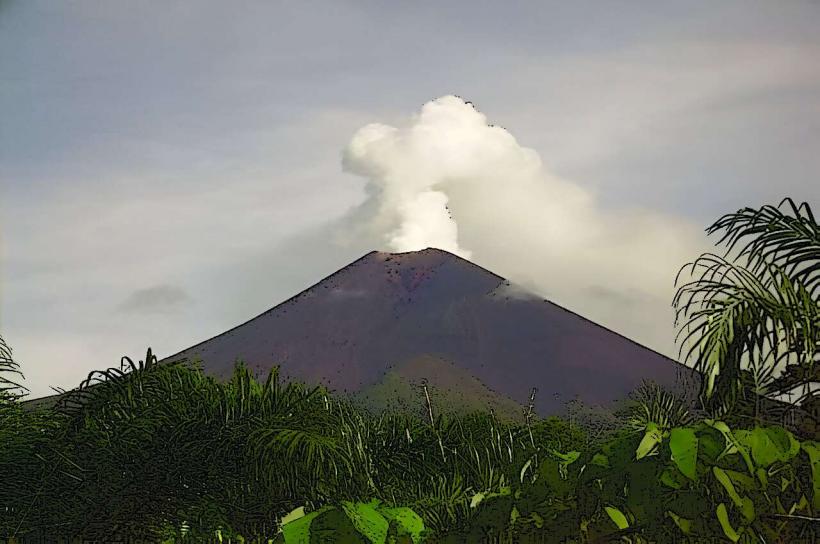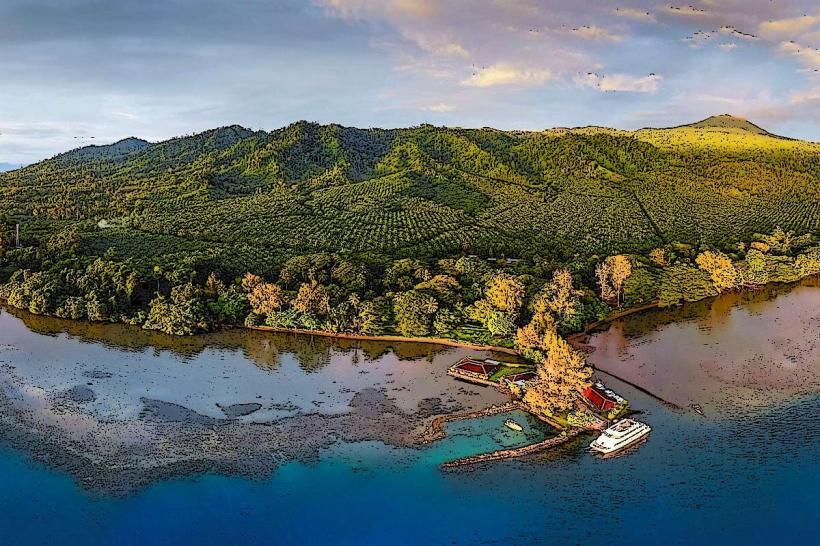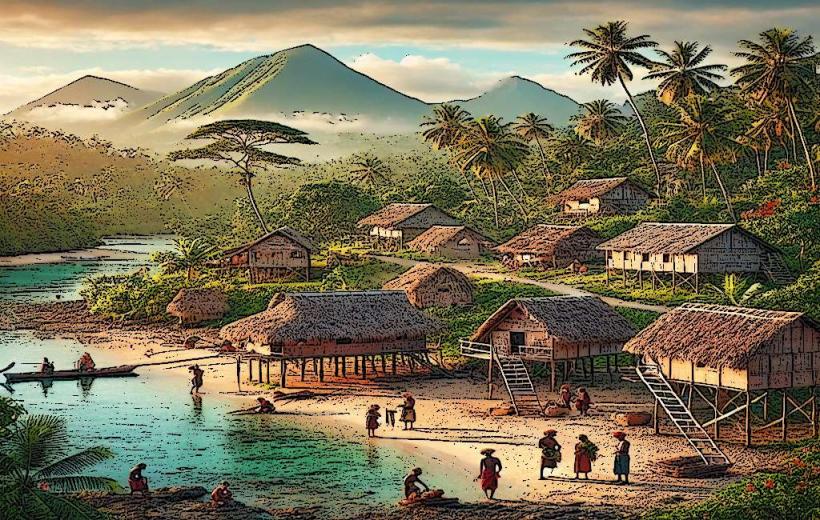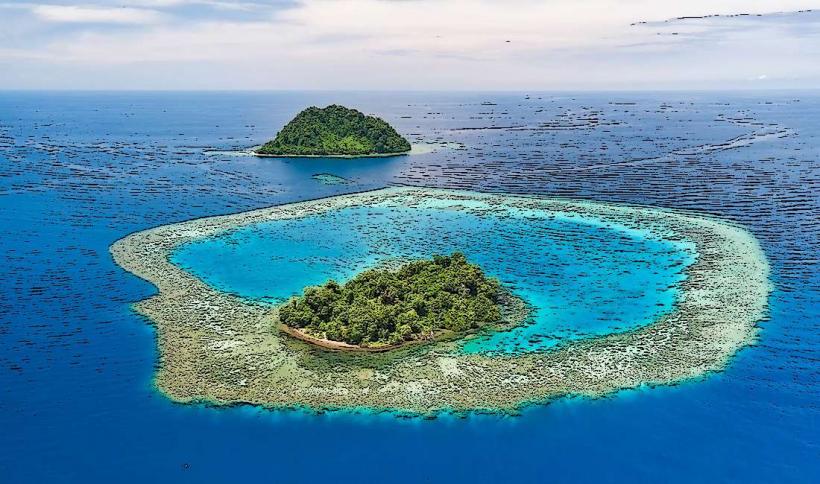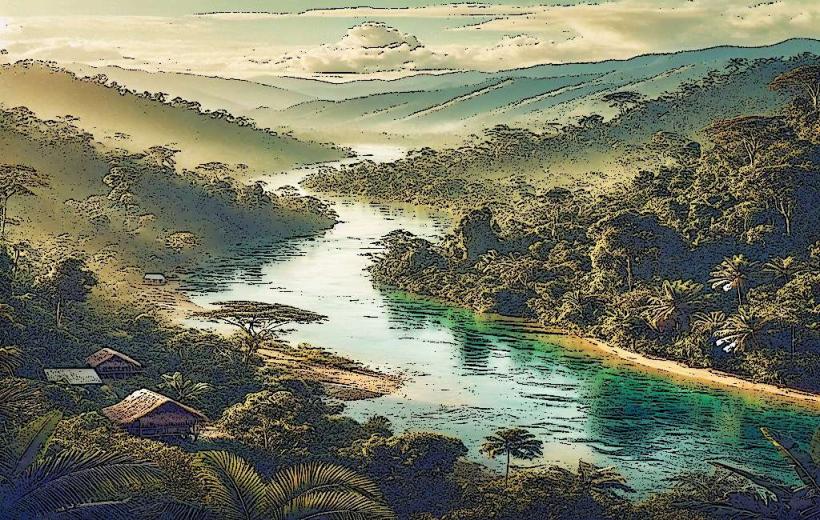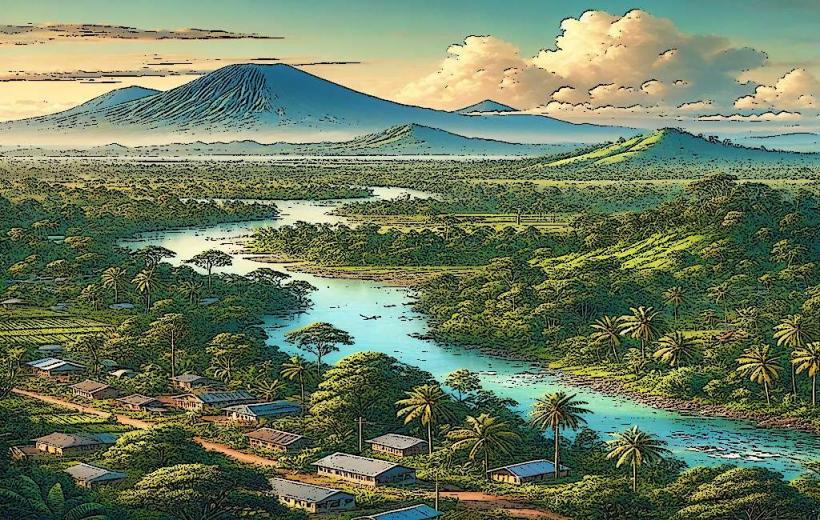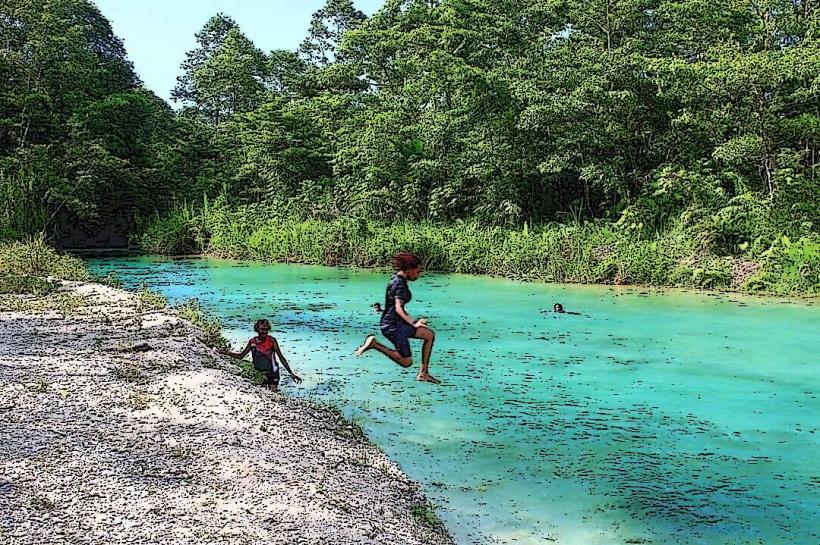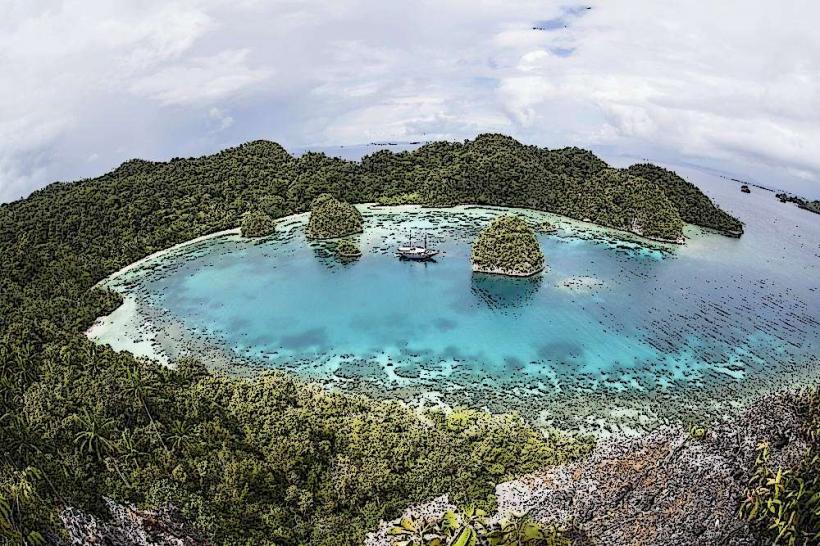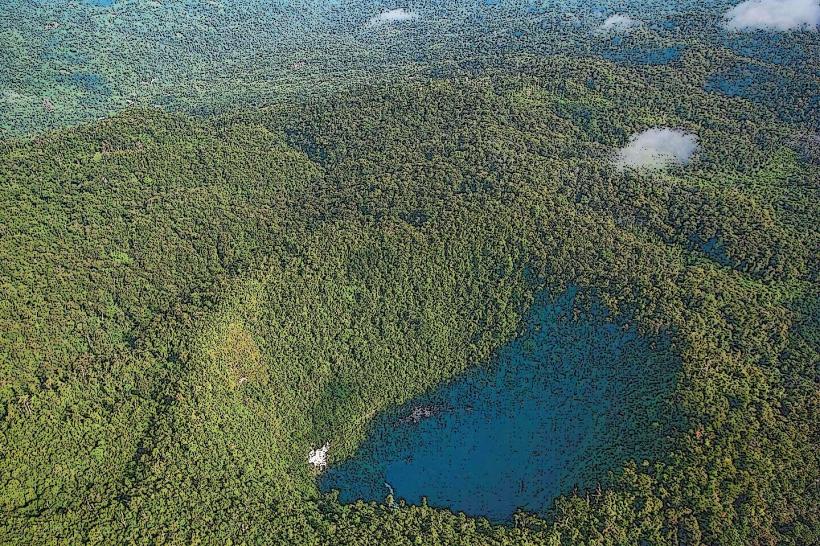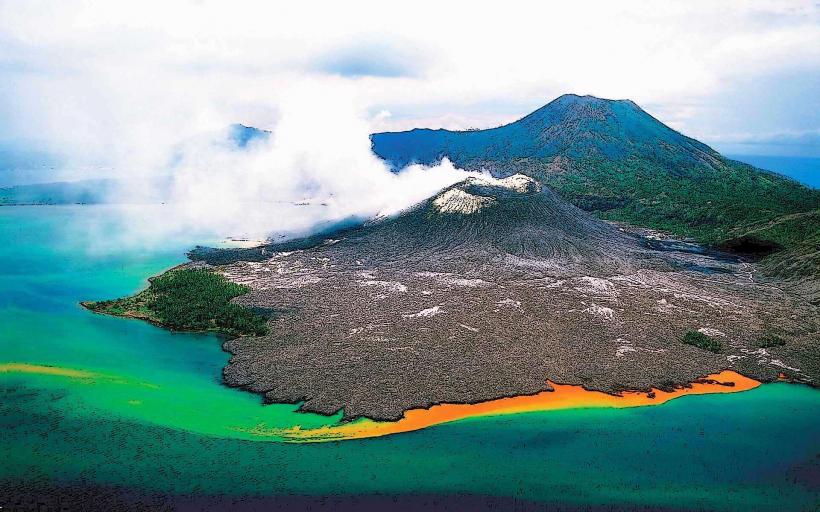Information
Landmark: Kimbe BayCity: West New Britain
Country: Papua New Guinea
Continent: Australia
Kimbe Bay is a large and beautiful bay located on the northern coast of New Britain Island in Papua New Guinea, specifically in the West New Britain Province. Known for its stunning natural beauty, biodiversity, and rich marine ecosystems, Kimbe Bay is considered one of the premier destinations for diving and eco-tourism. The bay is surrounded by lush tropical forests, volcanic landscapes, and a vibrant coral reef system, making it a hotspot for nature lovers and adventure enthusiasts.
Key Features of Kimbe Bay:
Geography and Location:
- Kimbe Bay is situated on the northern coast of New Britain, which is part of the Bismarck Archipelago in Papua New Guinea. The bay itself is approximately 40 kilometers wide and stretches along the New Britain coastline.
- The bay is surrounded by a combination of volcanic mountains, tropical rainforests, and beautiful coastal areas. It is home to several islands, including Baluan Island and Tari Island, which add to the bay’s charm and scenic appeal.
- The region is also affected by volcanic activity, with active volcanoes like Mount Ulawun located to the southwest of the bay, adding to the unique geological landscape.
Marine Biodiversity and Coral Reefs:
- Kimbe Bay is renowned for its rich marine biodiversity, which makes it a prime location for scuba diving and snorkeling. The bay's coral reefs are incredibly diverse, containing over 850 species of fish, 400 species of coral, and numerous species of marine invertebrates.
- The waters of Kimbe Bay are home to an abundance of manta rays, whale sharks, turtles, and other large marine species, as well as smaller, colorful fish that inhabit the coral reefs.
- The bay is part of the larger Kimbe Bay Marine Conservation Area, which is managed to preserve its delicate ecosystems and biodiversity. The area has been identified as one of the world’s most biodiverse marine ecosystems, making it a top destination for marine biology and conservation efforts.
Diving and Snorkeling:
- Kimbe Bay is considered one of the top diving destinations in the world. The bay is dotted with numerous dive sites, ranging from shallow reefs to deeper, more challenging dive locations. It offers something for all levels of divers, from beginners to advanced.
- Wreck dives, wall dives, and drift dives are just some of the types of experiences that divers can enjoy in the bay. The underwater visibility in Kimbe Bay is excellent, and the presence of diving resorts makes it an accessible destination for those seeking to explore the underwater world.
Conservation Efforts:
- Kimbe Bay is recognized globally for its importance in marine conservation. The region is home to a variety of protected species, and there have been significant efforts to conserve the marine ecosystems and protect the coral reefs from threats such as overfishing, climate change, and pollution.
- Local and international conservation organizations, including the Papua New Guinea Conservation and Environment Protection Authority, work to ensure that the bay’s resources are sustainably managed, promoting eco-tourism and marine protected areas.
- The bay also serves as an important site for scientific research on marine biodiversity, with ongoing projects aimed at better understanding the ecosystems and finding solutions to conservation challenges.
Eco-tourism and Activities:
- In addition to diving, Kimbe Bay offers a variety of eco-tourism opportunities. The area is home to rainforests, volcanic landscapes, and mangrove forests, making it an excellent destination for hiking, birdwatching, and wildlife photography.
- The region has a rich cultural heritage, with several indigenous communities living along the coastline. Visitors can engage in cultural tours, where they can learn about the traditional customs, languages, and practices of the local people.
- Fishing, kayaking, and sailing are also popular activities for those who want to enjoy the natural beauty of Kimbe Bay from the water.
Climate and Best Time to Visit:
- Kimbe Bay enjoys a tropical climate, with warm temperatures year-round. The region is typically hot and humid, with temperatures ranging between 25°C to 30°C (77°F to 86°F). Rainfall is frequent, particularly during the wet season, which runs from December to March.
- The best time to visit is during the dry season, which runs from April to November, when the weather is more favorable for outdoor activities like diving and hiking. The dry season also offers the best underwater visibility for diving.
Local Communities and Culture:
- The people of Kimbe Bay are part of various indigenous groups, with the main communities speaking Tok Pisin, Kuanua, and other local languages. They rely on subsistence farming, fishing, and trade for their livelihood.
- Visitors to the region have the opportunity to experience local traditions, including custom dances, sing-sings, and artwork that reflect the island’s cultural identity. Handicrafts, such as woven baskets and carved wooden items, are often available for purchase.
Access and Transportation:
- Kimbe is the capital town of West New Britain Province and serves as the main gateway to Kimbe Bay. The town is accessible by air, with flights connecting it to Port Moresby and other major cities in Papua New Guinea.
- The town has basic infrastructure, including accommodations, markets, and transport services. Visitors to Kimbe Bay typically stay in one of the local resorts or dive operators that offer packages for diving, eco-tours, and cultural experiences.
- Access to some of the more remote dive sites and islands in Kimbe Bay can be arranged through local dive shops or tour operators.
Challenges and Sustainability:
- Despite its natural beauty, Kimbe Bay faces several challenges related to environmental sustainability, including pollution, overfishing, and the impacts of climate change on the coral reefs. Rising sea temperatures and ocean acidification threaten the health of the bay’s coral reefs.
- Conservation efforts in Kimbe Bay continue to be critical to preserving the area’s unique marine life and ecosystems. Balancing eco-tourism with the protection of the environment is a central focus for the region's development.
Conclusion:
Kimbe Bay is one of the most biodiverse and beautiful locations in Papua New Guinea, offering a unique combination of stunning marine ecosystems, cultural heritage, and eco-tourism opportunities. With its world-class diving, snorkeling, and wildlife experiences, Kimbe Bay is a prime destination for nature lovers and adventure seekers. Its importance in marine conservation also makes it a significant area for environmental protection efforts, ensuring that future generations can continue to enjoy its beauty.

